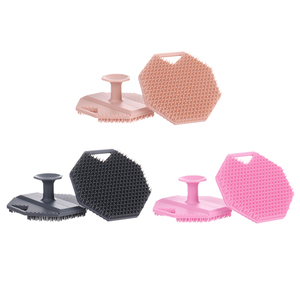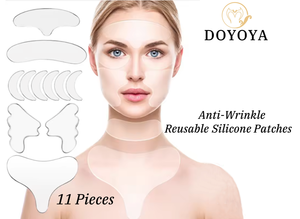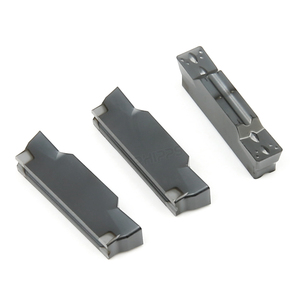
All categories
Featured selections
Trade Assurance
Buyer Central
Help Center
Get the app
Become a supplier

(2821 products available)


















































Face grooving is a machining operation performed on the inner and outer cylindrical surfaces of a workpiece, and there are several types of this operation.
These include:
Straight Face Grooving
Straight face grooving is the most commonly used type among the different types available. In this type of grooving, the groove is cut perpendicular to the axis of the workpiece.
Diagonal Face Grooving
Diagonal face grooving involves making angled grooves on the surface of the workpiece. This type is used when concerned with making grooves for application of identifying marks or for decorative purposes.
Curved Face Grooving
Also referred to as radial grooving, this kind of face grooving entails cutting grooves where both sides are curved. This type of grooving helps in producing unique designs. Apart from that, it also requires specialized tools to perform this operation effectively.
Threaded Face Grooving
Face grooving also includes the production of grooves that have a specific thread design. This type of grooving is usually applied in the production of sealing and locking mechanisms on cylindrical components.
Spiral Face Grooving
Spiral face grooving entails creating spiral grooves that run across the surface of the workpiece. This type of face grooving is useful in the production of grooves that are used for functional and decorative purposes.
In most cases, the material that is used in face grooving is strongly dependent on the workpiece material as well as the desired outcome. Below are some of the materials commonly used in face grooving:
High-Speed Steel (HSS)
Cutting tools made from this steel are used for face grooving as they retain cutting edge even when there is exposure to high temperatures. This makes them suitable for use in workpieces that are hard materials. In addition, HSS tools are versatile and can be used on different materials, including metals, plastics, and woods.
Cemented Carbide
Cemented carbide is a widely preferred material for face grooving cutting tools. Its attributes like exceptional hardness and wear resistance make it a suitable material to use when working with abrasive materials. Also, carbide grooving tools are very rigid and therefore ideal for high-precision machining.
ceramic
Ceramic cutting tools are hard and heat-resistant. These properties make them suitable when working with hard materials like metals. However, they are also brittle, and thus, not ideal for operations that have impact or shock.
CBN (Cubic Boron Nitride)
CBN is manufactured to resist abrasiveness. For this reason, it is suitable for face grooving operations on hardened steel and other hard alloys. CBN tools maintain their shape and cutting ability for a long time when applied to challenging machining tasks.
Cobalt-Alloy Tipped Tools
Cobalt-alloy tipped tools are suitable for face grooving on materials that have a high heat coefficient of expansion. These materials include copper and brass. Cobalt provides a wear-resistant surface that helps in effective machining of soft, ductile materials.
To understand the commercial importance of conducting face grooving, it is crucial to first understand its significance within the whole manufacturing sector.
Precision and Functionality
Face grooving guarantees precision when producing grooves that are essential for the functionality of components. These grooves are crucial design and functional features in areas suchen as sealing, locking, and assembly. There is a growing demand for precision in industrial applications, and this directly translates to increasing demand for face grooving services.
Customization and Aesthetics
Manufacturers are nowadays using face grooving to come up with customized and aesthetically appealing products. These grooves can be designed to have specific functionality and also to improve the product outlook.
For instance, industries like oil and gas, aerospace, and automotive usually use face grooving for custom solutions. This has therefore allowed face grooving services to fit certain niche markets.
Cost-Effectiveness
In manufacturing, face grooving can reduce production costs associated with making complex profiles. This efficiency is important to companies because it enables them to carry out operations at lower costs without compromising on quality. In the current competitive landscape, where margins tend to be very thin, cost reduction is key to improving profitability.
Innovation and Technology Integration
New technologies and advancements in face grooving are frequently made. Current trends in the industry include the use of CNC (Computer Numerical Control) machining. These advances improve the effectiveness and accuracy of face grooving. This therefore helps in the promotion of innovation on products and processes within the manufacturing industry.
Industry Applications
Face grooving has applications in various industries such as aerospace, automotive, oil and gas, and medical devices. In these sectors, precise grooves are critical for component performance. Therefore, its wide applicability makes it important in many occupations.
Selecting the correct face grooving products is challenging. Some of the things that a business owner should consider are the workpiece material, the type of groove required, and the required machine compatibility.
Here are the other factors:
Machine and Tool Compatibility
In order to guarantee compatibility with existing machinery, face grooving products need to be checked. Things like tool holders, inserts, and grooving blades must fit the machining equipment. This will help in avoiding the purchase of new machines just so they can perform face grooving.
Precision and Tolerances
The level of precison and tolerance required in the business determines the kind of products to purchase. Products that can offer the required groove dimensions with high precision should be purchased if the business is to deliver high precision grooves.
Cost and Durability
When purchasing face grooving products, the overall costs as well as durability have to be compared. While inserts and tools that are made of carbide are more expensive, they last longer, if not forever. Cost-effective products are essential when budgeting is very important. However, there needs to be considerations for replacement. These costs can add up hence making the product expensive in the long run.
Groove Type and Design
There are face grooving tools that are specifically designed for certain groove profiles. Businesses that offer general services should purchase products that can support different face grooving needs. On the other hand, businesses that have specific client requests should purchase products that support those specific needs.
Material Quality
Face grooving products are manufactured using either carbide or high-speed steel. Only products that are manufactured using high-quality material should be purchased. These materials ensure that the tools have a longer service life and better performance.
To elicit a long smooth service from face grooving products, they need to be properly maintained and managed. This not only improves working conditions, but also enhances production efficiency.
Here are some tips on how businesses can maintain their face grooving products:
Storage
When not in use, face grooving tools should be placed in moisture-proof storages. These tools should be placed in individual cases or slots to prevent them from getting damaged. Also, during storage, the tools should be covered by a protective oil coat to prevent rusting.
Grooving Blades
Businesses need to perform regular inspections on their grooving blades. Also, they should be replaced when blunt, worn, or chipped. During blade replacement, businesses need to use only original equipment manufacturer (OEM) blades. These are the only blades that will ensure there is optimal performance.
Lubrication
Proper lubrication ensures that there is low friction between the tool and the workpiece. Because of this, components elicit a longer service life. Businesses need to apply lubrication on grooving tools and blades as well as on the machine part where they are mounted. They also need to ensure they are using the right lubricants. This is because using the right lubricants improves tool performance and reduces tool wear.
Durst and Chip Removal
Chip buildup not only causes overheating, but also affects tool performance. It can even result in inaccurate grooving and tool damage. Since this buildup causes so much havoc, businesses need to install efficient chip removal systems within their workspaces. Users also need to do regular checks to ensure there is no chip buildup on the tools as well as on the machine.
Inspection and Measurement
There should be regular inspections of face grooving products to check for signs of wear, corrosion, or damage. Apart from visual inspection, businesses also need to use measurement tools to check grooving accuracy. Products that have wear or set-one should be discontinued from use and replaced immediately.
Q1: What is face grooving?
Face grooving is a machining operation performed on the inner and outer cylindrical surfaces of a workpiece. It involves removing material from the flat face of a workpiece to create grooves or channels.
Questions: What are the common uses of face grooving in machining?
There are two common uses of face grooving in machining. One is to manufacture parts that contain keyways, grooves, or notches. The other is to improve the part's surface for functional or aesthetic purposes. Examples of such uses are making grooves on seals, gaskets, and O-rings.
Q3: What tools are employed in face grooving?
Cutting materials such as grooving tools, toolposts, and inserts are employed when carrying out face grooving. HSS, carbide, ceramic, CBN, and cobalt-alloy-tipped tools are some of the materials used. Face grooving products are to be managed and maintained to elicit long service life from them. Some of the maintenance tips include storage, lubrication, and inspection.
Q4: What are the benefits of maintaining face grooving products?
Maintaining face grooving products has some benefits. Products in good condition have higher accuracy, and they are more efficient. They also have a longer service life.